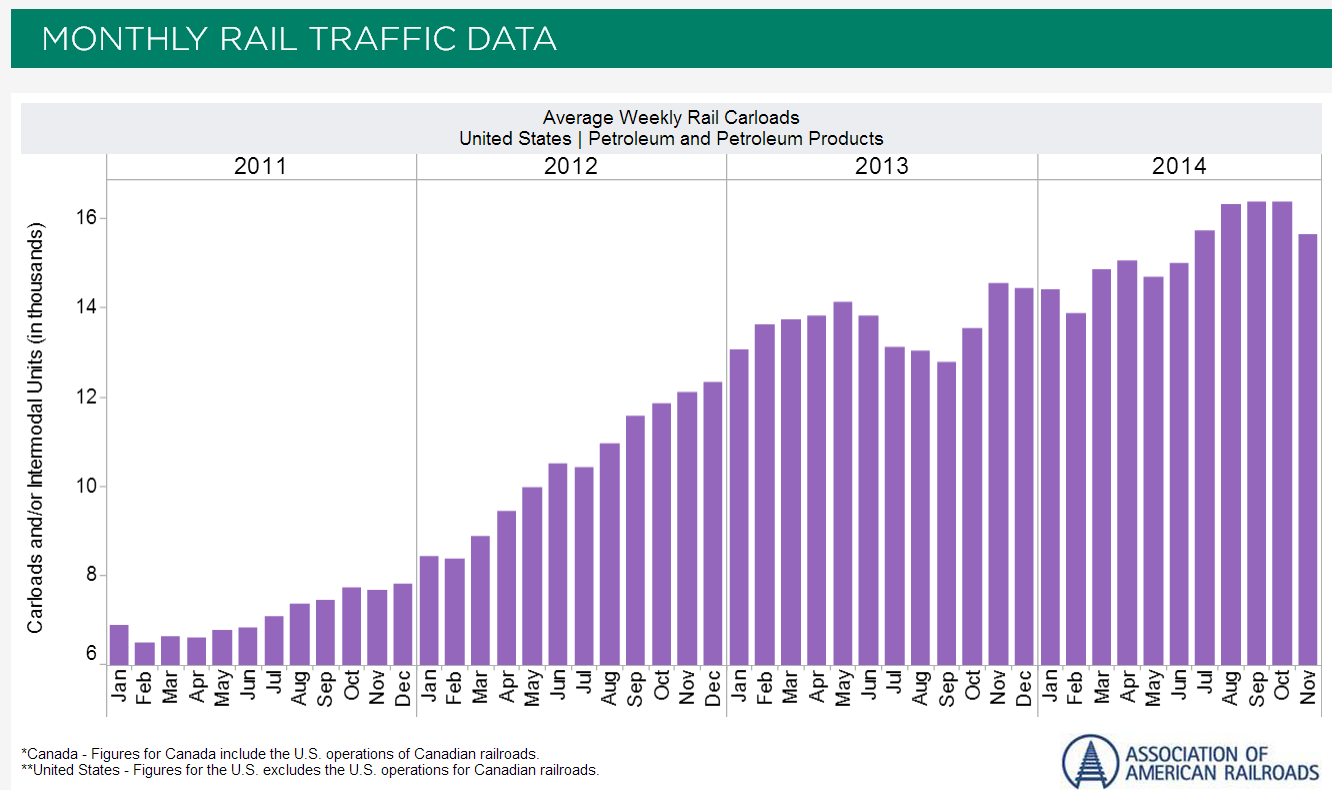Economy

Rail Freight Shipments Increase in November
Written by Sandy Williams
December 11, 2014
Railroad traffic increased in November for both carload and intermodal volume. Class 1 freight railroads carried 1,161,820 carloads in November, up 1.4 percent year-over-year, according the American Association of Railroads.
Intermodal traffic in increased by 2.7 percent with a weekly average volume of 258,765 containers and trailers for the month, the highest level in history for a November.
Coal shipments were flat in November despite recent calls by utility companies for government intervention to force BNSF railway to increase capacity for coal shipments. Approximately two thirds of the coal for power plants is shipped by rail. Recent congestion due to high grain and oil shipments has left utility companies short on coal inventory to cover the winter months.
Crude oil shipments in the third quarter were 10.6 percent higher than second quarter 2014. Oil has been getting the major share of blame for rail capacity shortage and congestion. The chart below from AAR shows the dramatic increase in petroleum shipments since 2011.
AAR reports November metallic ore shipments were up 5,241 carloads or 19.8 percent year-over-year. Crushed stone, sand and gravel was up 16.8 percent, petroleum products 7.6 percent, and coke 5 percent.
“It’s not always easy to tell from available indicators how the economy is performing and that is true for rail traffic in November when some traffic categories showed solid growth, others not so much,” said AAR Senior Vice President John T. Gray. “A healthy and efficient freight rail network is vital to delivering America’s changing economy. Today, railroads are moving more traffic than at any time since 2007.”

Sandy Williams
Read more from Sandy WilliamsLatest in Economy

Architecture billings continue to slide in March
Architecture firms said billings continued to decline in March, according to the latest Architecture Billings Index (ABI) released by the American Institute of Architects (AIA) and Deltek.

Beige Book shows concerns about trade policy
Manufacturing was mixed, but two-thirds of districts said activity was little changed or had declined.

New York state manufacturing index drops again in April
Firms were pessimistic, with the future general business conditions index falling to its second lowest reading in the more than 20-year history of the survey

Construction adds 13,000 jobs in March
The construction sector added 13,000 jobs, seasonally adjusted, in March, but tariffs could undermine the industry.

Supply chains, end-users brace for impact from tariffs
Supply chains are working through what the tariffs mean for them

